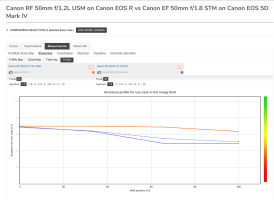I think it's great that are more options for Canon M cameras, but just to be accurate, and don't shoot the messenger, these are old lenses that Sigma just decided to slap an M-mount and electronics on.
The title of ALL these blog articles should be
"Sigma adapts their existing F1.4 Contemporary line of Sony and Four Thirds mount lenses to Canon"
Two Of the 3 lenses were introduced YEARS ago. Sigma just recently decided well I'll guess we'll just tap into the M market. Here's the 2016 release of the lens 3 years ago, the exact same lens "released" recently:
The Sigma 30mm F1.4 DN DC Contemporary was announced in February 2016, and sits atop Sigma's line of DN mirrorless lenses. It's currently the only APS-C F1.4 autofocus lens available for Sony E-mount and has an MSRP of $339. Can it best the Sony 35mm F1.8 OSS? Read more

www.dpreview.com
Google the 16mm and you'll see it's old too.
Sigma did nothing but take their old existing line of Sony and Four Thirds lenses and put on the Canon mounts and electronics and announce it like it's something amazing.
Don't get me wrong. I think that's great. If these lenses are useful for Canon shooters, awesome. But Sigma DID NOT create or cater to Canon M-series. You know how they're old lenses? You can take the 2016 version of the Sony and have them put on the Canon mount. And it's the same exact lens that you would buy today in Canon M. That's great. I love the idea of switching brands and having a lens manufacturer take your old lenses and switch mounts.
The point? Sigma did not create new lenses for the Canon M system because they thought there was a market. They just took their years' old lenses and put a Canon mount on it because they figured hey, cool the M series is doing well, might as well put in the SMALL INCREMENTAL DOLLARS to put a Canon mount on our existing old lenses.
I'm only writing because I don't want anyone to see the Sigma post and think that 3rd party manufacturers are designing lenses JUST for the Canon m-mount. To my knowledge, no 3rd party one has created a lens just for Canon M.
I can't be clearer though... I think it's GREAT that these lenses are available to those who want them. I just don't want anyone thinking this is indicative of where the market is going.





